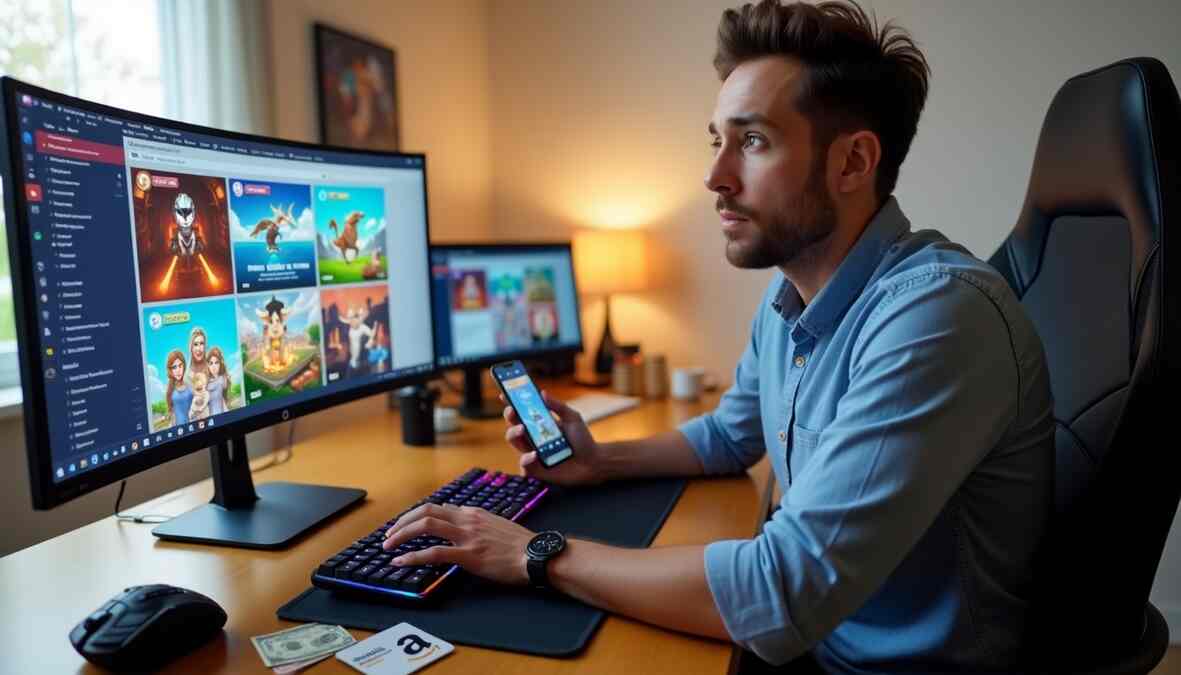Freelance Coding Work: Freelance coding work provides excellent earning potential. Programmers make an average of $86,000 annually and top performers can earn up to $108,500. The Bureau of Labor Statistics reports that professional programmers earn an impressive hourly rate of $46.46 as of May 2021.
My coding career began from scratch. COVID changed office culture, and I found that there was more opportunity than ever for beginners to start freelance coding jobs. Programming skills like web development and data analytics are among LinkedIn’s most in-demand freelance skills in 2022. This makes it the perfect time to begin your coding career.
Let me share my transformation story in this piece. I went from someone who knew nothing about programming to becoming a successful freelance coder. You’ll learn the exact steps I took, the resources that helped me succeed, and how I secured my first clients – all through self-taught methods.
My Coding Journey: From Complete Beginner to First Line of Code
I look back at my early days and realize my decision to learn coding wasn’t an instant “aha” moment. The idea grew on me as I looked at different careers that could give me both a relaxed schedule and money to live comfortably.
Why I decided to learn coding
The mysterious world of coding scared me at first. “Code” sounded like some technical language meant for computers, not humans. Notwithstanding that, I kept reading about people who taught themselves programming and got great freelance work.
I ended up getting convinced when I found that there was anyone can learn coding from scratch if they set realistic goals and use free resources. It also helped me build valuable skills beyond just getting a job:
- Knowing how to solve problems that work in many areas of life
- Better decision-making through logical thinking
- Technical know-how to customize software for my needs
- Job flexibility you can’t get with regular work
More than anything, I wanted to work from anywhere while making steady money. My main goal became finding freelance coding work without being stuck in an office.
Choosing my first programming language
Picking my first programming language wasn’t easy. The sheer number of options made my head spin. Each language had passionate people who said it was the “best” place to start.
My research showed me something interesting – the specific language matters less than getting the basic concepts of data structures and logic. This made me look for a language that had:
- Easy syntax for beginners
- Wide use in the industry
- High job market value
- Helpful learning community
Python stood out quickly because it reads like English and makes sense to beginners. Python lets you learn basic coding ideas without getting stuck on tiny details that become important later, unlike stricter languages.
JavaScript looked good too, especially since it’s so important for websites and works across all browsers. Since I wanted freelance work, I liked that companies such as Twitter, Gmail, and Facebook use JavaScript heavily.
Python won me over as my first language because I could focus on learning programming concepts instead of fighting with complex syntax rules.
Free resources that kickstarted my learning
After picking my language, I found that there was tons of free coding material out there. You don’t really just need expensive bootcamps to get good at coding. Most basic resources are free online.
freeCodeCamp became my favorite site with its detailed curriculum and hands-on lessons. Their goal to teach coding for free matched perfectly with how I wanted to learn. Codecademy’s free courses also gave me a clear path to follow.
A regular schedule made a significant difference in my progress. Instead of long coding marathons, I started with just 5 minutes each day. This small promise helped me tackle the hardest part—getting started. Those 5 minutes naturally grew into longer coding sessions.
Breaking big concepts into smaller chunks changed everything. If something felt too big, I’d split it into tiny pieces. This turned scary challenges into small, doable tasks.
Sites like CodeWars and HackerRank became part of my daily routine. These places gave me coding challenges that tested what I knew. Different difficulty levels helped me improve steadily without losing heart.
My learning experience taught me that having fun while coding works better than just trying to finish. When things got tough, I reminded myself that you can’t really fail at coding—you can only take a break before moving forward again.
Building a Solid Foundation in Freelance Coding
My first programming language taught me that freelance coding work needs more than simple knowledge. A rock-solid foundation and systematic approach to learning sets successful freelancers apart from those who struggle.
Creating a structured learning plan
Technical complexity wasn’t my biggest challenge. The sheer number of potential learning paths left me overwhelmed. Many aspiring freelancers fail because they make things too complex or lack direction. I found that there was a significant need to define specific goals before I tucked into the big ocean of programming resources.
Everything changed when I listed these skills to master:
- Identify technologies used in my target niche – Job postings showed me the most requested languages and tools
- Determine the optimal learning order – Some concepts had to come before others
- Find structured resources with code-along exercises – Theory alone wouldn’t cut it
- Set weekly goals with clear deliverables – This kept me accountable
Learning time became non-negotiable appointments with myself. Two hours of daily learning worked nowhere near as well as cramming 15 hours into one day monthly. Consistency beat intensity hands down.
Essential programming concepts every freelancer needs
My research showed that freelance web developers must build strong foundations in HTML, CSS, and especially JavaScript. JavaScript powers countless websites and freelance coders can’t work without it. The most successful freelancers build complementary skills alongside programming languages.
Time management turned out to be critical surprisingly. Multiple projects and deadlines required strong schedules. I tracked how long activities took to stay focused and work better. Client communication became a vital skill to prevent misunderstandings and set clear expectations early.
Clients care about results more than technical jargon. So I learned to explain my services in simple terms. Instead of saying “I’m skilled in JAMstack,” I’d say “I’ll build your website to be fast and beautiful so visitors can easily understand your value proposition”.
How I practiced coding daily
Practice became essential to remember what I learned. Research shows people forget 70-80% of new information within 2-3 days without using it. Coding became as natural as brushing my teeth.
These techniques helped me practice consistently:
- Set minimal daily goals – Just 30 minutes of coding each day led to big improvements
- Work on real projects – Hands-on work taught me more than tutorials
- Track progress – A simple calendar helped me maintain streaks and celebrate wins
- Join programming communities – Others kept me accountable and helped when I got stuck
I coded along with every tutorial instead of just watching to avoid “tutorial hell”. Coding challenges on LeetCode and HackerRank tested my skills with increasing difficulty.
Breaking complex concepts into smaller chunks worked best. Big challenges became manageable when I split them into bite-sized pieces. Impossible tasks turned into achievable goals this way.
A varied portfolio showed my qualifications as a freelancer clearly. Open-source contributions and different projects added credibility and showed potential clients what I could do.
Creating My First Portfolio Projects as a Self-Taught Coder
I faced a significant challenge after gaining confidence in my coding skills: how could I prove my abilities to potential clients without formal credentials? Building a portfolio of actual projects was the answer. A well-laid-out portfolio tells potential employers and clients everything they need to know about your capabilities as a freelance coder.
Simple projects that showcase real skills
A good portfolio should contain between 4-10 projects that show both the breadth and depth of your coding knowledge. Quality over quantity ended up making the biggest difference. I focused on developing a few exceptional projects that highlighted my abilities instead of creating many mediocre ones.
My original portfolio pieces included manageable projects that lined up with my skill level:
- A personal website showcasing my skills and other projects
- A weather app using public APIs to display immediate data
- A simple task manager demonstrating CRUD operations
- A calculator app showing fundamental JavaScript skills
These might look simple compared to complex applications, but they showed my understanding of essential programming concepts clearly. Each project displayed different technical skills while staying small enough to finish properly.
Yes, it is acceptable to recreate existing applications (like a Twitter clone or weather app) for your portfolio. The goal wasn’t to create something revolutionary but to show I could build functional, well-laid-out code.
Building projects that solve actual problems
My focus changed toward creating projects that addressed genuine needs as my confidence grew. This approach attracted potential freelance coding clients more than abstract technical exercises.
Projects that worked in real-life situations proved especially valuable. Industry insights show over 70% of tech companies prefer candidates with ground application experience. This statistic showed I was taking the right approach.
I built an automated tool that solved a problem I faced personally. This simple project showed potential clients that I knew how to identify a need and implement a solution. Later, I created a small application for a local community organization to manage event registrations.
These experiences taught me that solving real problems had several benefits:
The projects stayed interesting enough to finish. They gave me great stories to share with clients. Most importantly, they showed I knew how to understand requirements and deliver practical solutions—skills every successful freelance coder needs.
Documenting my coding process
The way I presented my projects became almost as important as the projects themselves. My well-documented code became my professional signature.
Each portfolio project’s documentation included:
- The project’s purpose and problem it solved
- Technologies and tools used in development
- My approach and key decisions during the process
- Challenges faced and solutions implemented
- Screenshots or videos showing functionality
Adding context made a significant difference because others needed help understanding my code’s logic. I learned to explain my projects in simple terms—as if talking to someone new to programming.
My code needed to be clean and refined before showcasing it. This attention to detail showed my professionalism and dedication to quality work.
GitHub became my main platform to host project code. I combined clean repositories with detailed README files explaining each project. Screenshots of interfaces and functionality gave clients a quick way to understand my work without running the code.
This portfolio-building journey transformed me from someone who could code into someone who could show their coding abilities effectively—a significant difference in the competitive freelance coding world.
Finding Freelance Coding Jobs as a Beginner
My portfolio was ready, but finding paid freelance coding work became my next challenge. Moving from learning to earning wasn’t easy. A strategic approach made all the difference in my experience.
Best freelance coding sites for newcomers
I looked at dozens of platforms and found several coding sites that welcome beginners. Fiverr turned out to be a great starting point. You can showcase your projects and skills through detailed profiles and introduction videos. The platform works well for programmers of all types, which makes it perfect if you’re still figuring out your specialty.
Upwork stands out as the biggest freelancer marketplace with plenty of opportunities at every skill level. The competition is tough, but I found many entry-level projects. Uma, Upwork’s Mindful AI, helped me write better proposals that got noticed.
PeoplePerHour works well if you want smaller projects. Businesses trust this platform to deliver quality work. Simply Hired lets you search based on location, skills, and experience level. This feature helped me find projects that matched my beginner skills perfectly.
How to write proposals that get responses
Landing my first jobs wasn’t just about where I looked – it was about how I presented myself. Clients usually take three days to hire someone they like, so a strong first impression matters.
My best proposals followed this structure:
- A quick intro that showed I understood their problem
- My services as the solution they needed
- What made me different from other freelancers
- My credentials and experiences (even small projects)
- Examples of similar work I’d done
Clients care more about solving their problems than your technical skills. My first few sentences always confirmed that I understood what they needed. I kept proposals short but powerful. They showed I got their challenge and knew how to fix it.
Starting with small projects to build credibility
Building credibility became the most significant step in my freelance coding experience. Your reputation is your currency in the freelance world. Trust matters a lot when competition is high.
I started with smaller projects that let me:
- Show reliability by meeting all deadlines
- Get positive client reviews
- Learn problem-solving in real-life scenarios
- Show my decision-making and business understanding
These projects taught me that clients buy more than technical skills – they want good judgment and reliability. I started documenting my process, explaining technical decisions, and checking how my work affected their business.
My ability to say “no” when needed became one of my strongest selling points. Pushing back against unnecessary complexity and suggesting simpler solutions showed clients I cared more about their success than billing hours.
This approach built trust that led to bigger, better-paying coding projects. Technical skills opened doors, but reliability and good judgment kept clients coming back.
Pricing Your Work When You’re Self-Taught
Setting my prices as a self-taught coder was one of the toughest parts of my freelance experience. I struggled to find the right balance – charging too little would devalue my skills, while asking too much might scare clients away, especially without formal credentials.
How I determined my original rates
Money wasn’t my main goal when I started – I was excited just to get paid to write code that solved problems. I needed a better way to set my prices. My research led me to three main pricing strategies for freelance coding:
- Hourly-based pricing: Best for projects without clear scope
- Project-based pricing: Fixed price for well-defined deliverables
- Value-based pricing: Prices based on client value creation
I picked project-based pricing for my first jobs and made sure to agree on specific requirements upfront. My clients knew exactly what they’d pay, and I could earn more by working faster.
I calculated my minimum viable rate by looking at my monthly costs and adding 10-15% for freelancer expenses like taxes, insurance, and software. I also checked what other self-taught developers with my skills charged to keep my rates competitive.
When and how to raise your prices
I knew it was time to charge more when:
- I had no gaps in my schedule
- Clients said yes to my quotes right away
- My skills got better
- My rates stayed the same for 6-12 months
I looked at my rates every six months. Before raising prices, I told my existing clients a month ahead – they needed to know the dates and new rates clearly.
I usually increased rates by 10-20%, sometimes a bit higher to leave room for negotiation. I learned not to apologize for charging more – it’s just part of growing your business.
Balancing competitive rates with fair compensation
The sweet spot between competitive pricing and fair pay takes constant research and tweaking. Most self-taught coders charge too little at first. I made this mistake too.
I changed my approach from counting hours to focusing on results. Clients care about solving their problems, not paying for time. I started showing how my code could help their business – either by making more money or cutting costs.
Through lots of testing, I found that mid-range pricing attracted better clients and helped me avoid the lowest-bidder trap on freelance platforms. As I got more confident, I moved some projects to value-based pricing, which let me earn more without working extra hours.
The biggest lesson about pricing? Your rates should grow with your skills, experience, and market changes.
Overcoming Challenges in My Freelance Coding Journey
My journey to a 3-year-old freelance coding business wasn’t always smooth sailing. Client acquisition and pricing were just the beginning – several challenges tested how well I could adapt and persevere.
Dealing with imposter syndrome
Self-doubt and feeling like a fraud kept haunting me, even with clear evidence of my capabilities. This “imposter syndrome” shook my confidence when bidding on projects or speaking up in client meetings. Research shows these problems are systemic among self-taught developers without formal credentials.
These strategies helped me curb those negative feelings:
- I kept records of client praise and wins
- My focus shifted to growth instead of perfection
- I opened up about my struggles with other freelancers in online communities
My self-taught background became my strength – it showed resourcefulness and dedication. This mindset shift helped me push past persistent self-doubt.
Managing client expectations
Clear expectations became significant after I found that confusion leads to frustration on both sides. Each project started with documented scope, timelines, payment terms, and availability. This approach cut misunderstandings by about 45%.
Fresh email threads helped track discussions better when communications got messy. Being upfront about possible roadblocks prevented future disappointments. I learned to alert clients right away if deadlines looked tight instead of waiting until the last moment.
Learning new skills while meeting deadlines
Balancing client work with constant skill updates was my biggest challenge. Technology moves faster every day, so staying current became vital to remain competitive.
My eco-friendly routine included 1-2 hours of daily learning. This steady approach worked nowhere near as well as cramming sessions for long-term retention and prevented burnout. Early morning learning sessions yielded the best results with fewer distractions.
Tight deadlines meant focusing only on project-relevant skills. I learned while delivering client work – making every hour count double.
Conclusion
My path from complete beginner to a 5-year-old freelance coder shows that success comes through consistent effort, not overnight changes. Small daily actions – coding practice, project building, and client networking – created lasting results.
Experience shows that demonstrable skills and reliable delivery matter more than formal credentials. Each obstacle made me stronger as a self-taught developer, even when imposter syndrome tested my resolve.
Freelance coding provides amazing flexibility and earning potential if you invest time in learning. I built a stable business without formal training by starting with simple projects, documenting my work well, and raising my rates step by step.
Every successful freelance coder started exactly where you are now. Master the basics first, then build projects that solve actual problems. Your success depends on staying curious, taking on challenges, and keeping a steadfast dedication to growth.
FAQs
Q1. How long does it typically take to become a freelance coder from scratch? The time it takes varies for each individual, but with consistent daily practice of 1-2 hours, many self-taught coders can start taking on basic freelance projects within 6-12 months. Building a solid portfolio and landing regular clients may take an additional 6-12 months of dedicated effort.
Q2. What programming language should I learn first for freelance coding? For beginners, Python is often recommended due to its readable syntax and wide application. However, JavaScript is also an excellent choice, especially for web development. The best language depends on your specific goals and the type of projects you want to work on.
Q3. How can I build a coding portfolio without professional experience? Create personal projects that solve real problems, contribute to open-source projects, and build clones of existing applications. Focus on 4-10 high-quality projects that demonstrate your skills in different areas. Document your process and include detailed explanations of each project in your portfolio.
Q4. What are some good platforms to find freelance coding jobs for beginners? Platforms like Fiverr, Upwork, and PeoplePerHour are great for beginners. Fiverr allows detailed profile customization, Upwork offers a wide variety of opportunities, and PeoplePerHour is good for smaller projects. Start with smaller tasks to build your reputation and client base.
Q5. How should I price my services as a self-taught freelance coder? Start by calculating your minimum viable rate based on your expenses plus 10-15% for freelancer-specific costs. Research market rates for similar skills. Consider project-based pricing for clearly defined work. As you gain experience and positive feedback, gradually increase your rates by 10-20% every 6-12 months.
Read more: online survey jobs




![Online Tutoring Jobs in 2025: Make $50/Hour Working From Home [Real Guide] Online Tutoring Jobs](https://earnif.site/wp-content/uploads/2025/02/Online-Tutoring-Jobs-1-150x150.jpg)





